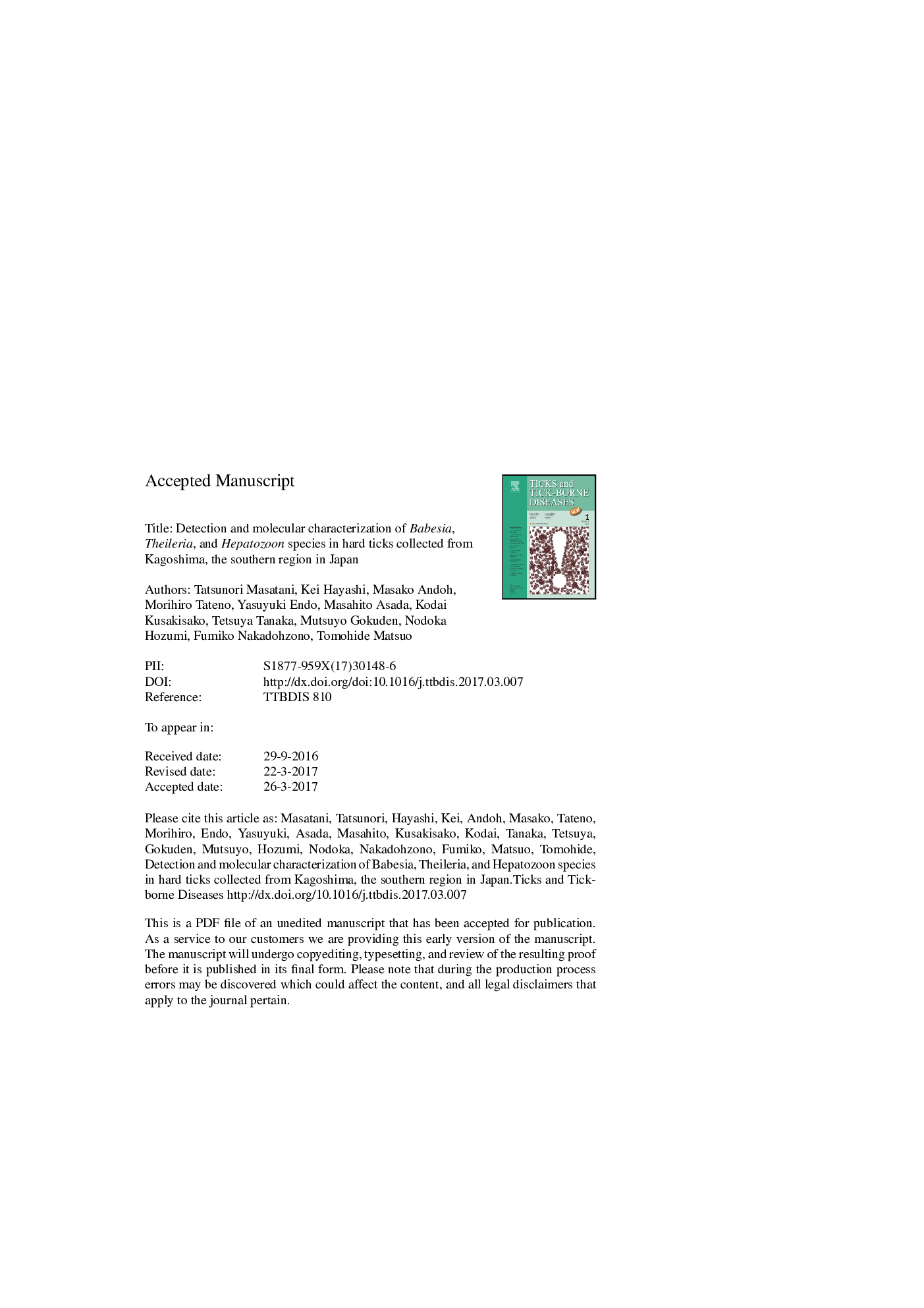| Article ID | Journal | Published Year | Pages | File Type |
|---|---|---|---|---|
| 5546308 | Ticks and Tick-borne Diseases | 2017 | 32 Pages |
Abstract
To reveal the distribution of tick-borne parasites, we established a novel nested polymerase chain reaction (PCR) system to detect the most common agents of tick-borne parasitic diseases, namely Babesia, Theileria, and Hepatozoon parasites. We collected host-seeking or animal-feeding ticks in Kagoshima Prefecture, the southernmost region of Kyusyu Island in southwestern Japan. Twenty of the total of 776 tick samples displayed a specific band of the appropriate size (approximately 1.4-1.6Â kbp) for the 18S rRNA genes in the novel nested PCR (20/776: 2.58%). These PCR products have individual sequences of Babesia spp. (from 8 ticks), Theileria spp. (from 9 ticks: one tick sample including at least two Theileria spp. sequences), and Hepatozoon spp. (from 3 ticks). Phylogenetic analyses revealed that these sequences were close to those of undescribed Babesia spp. detected in feral raccoons in Japan (5 sequences; 3 sequences being identical), Babesia gibsoni-like parasites detected in pigs in China (3 sequences; all sequences being identical), Theileria spp. detected in sika deer in Japan and China (10 sequences; 2 sequences being identical), Hepatozoon canis (one sequence), and Hepatozoon spp. detected in Japanese martens in Japan (two sequences). In summary, we showed that various tick-borne parasites exist in Kagoshima, the southern region in Japan by using the novel nested PCR system. These including undescribed species such as Babesia gibsoni-like parasites previously detected in pigs in China. Importantly, our results revealed new combinations of ticks and protozoan parasites in southern Japan. The results of this study will aid in the recognition of potential parasitic animal diseases caused by tick-borne parasites.
Keywords
Related Topics
Life Sciences
Agricultural and Biological Sciences
Animal Science and Zoology
Authors
Tatsunori Masatani, Kei Hayashi, Masako Andoh, Morihiro Tateno, Yasuyuki Endo, Masahito Asada, Kodai Kusakisako, Tetsuya Tanaka, Mutsuyo Gokuden, Nodoka Hozumi, Fumiko Nakadohzono, Tomohide Matsuo,
